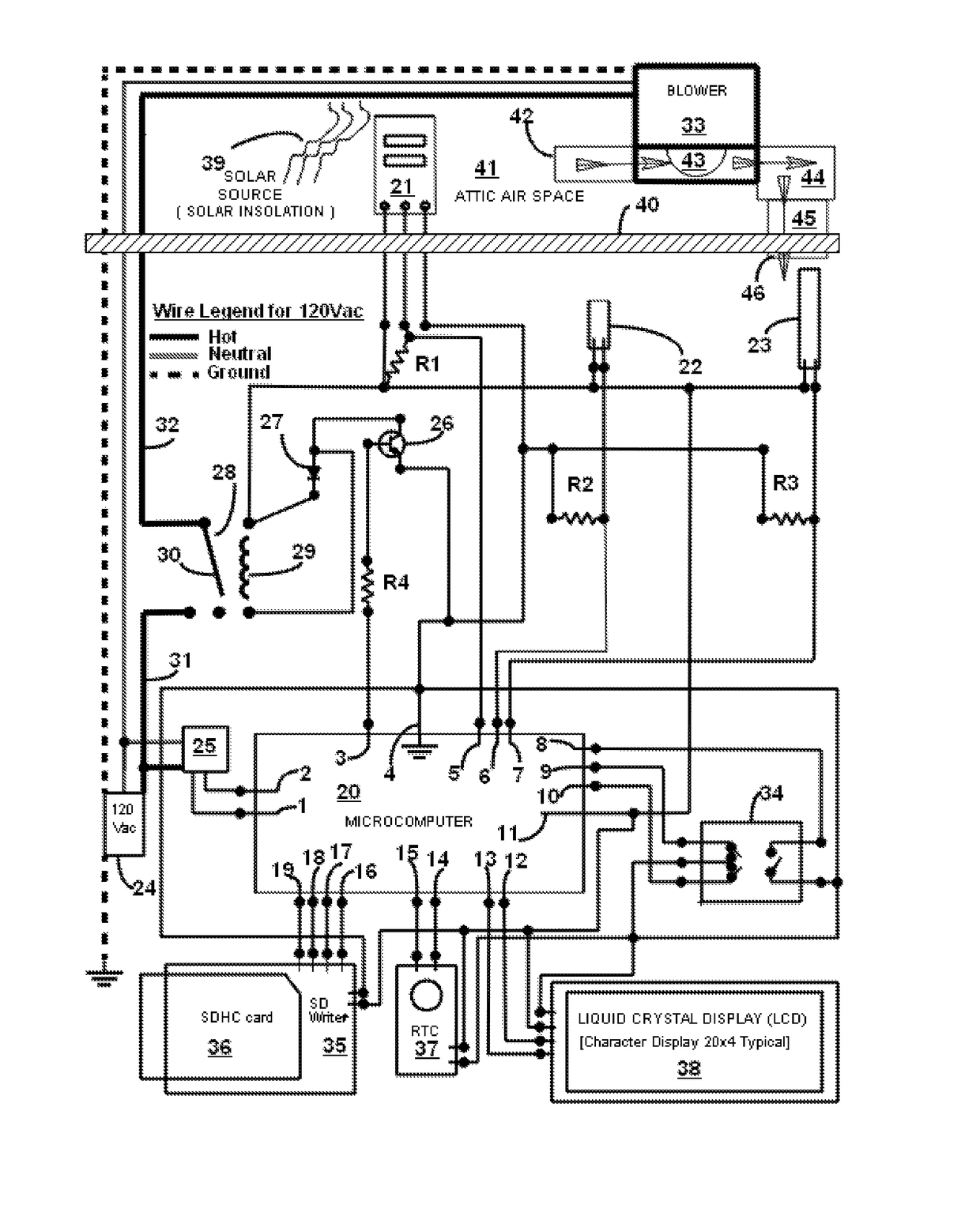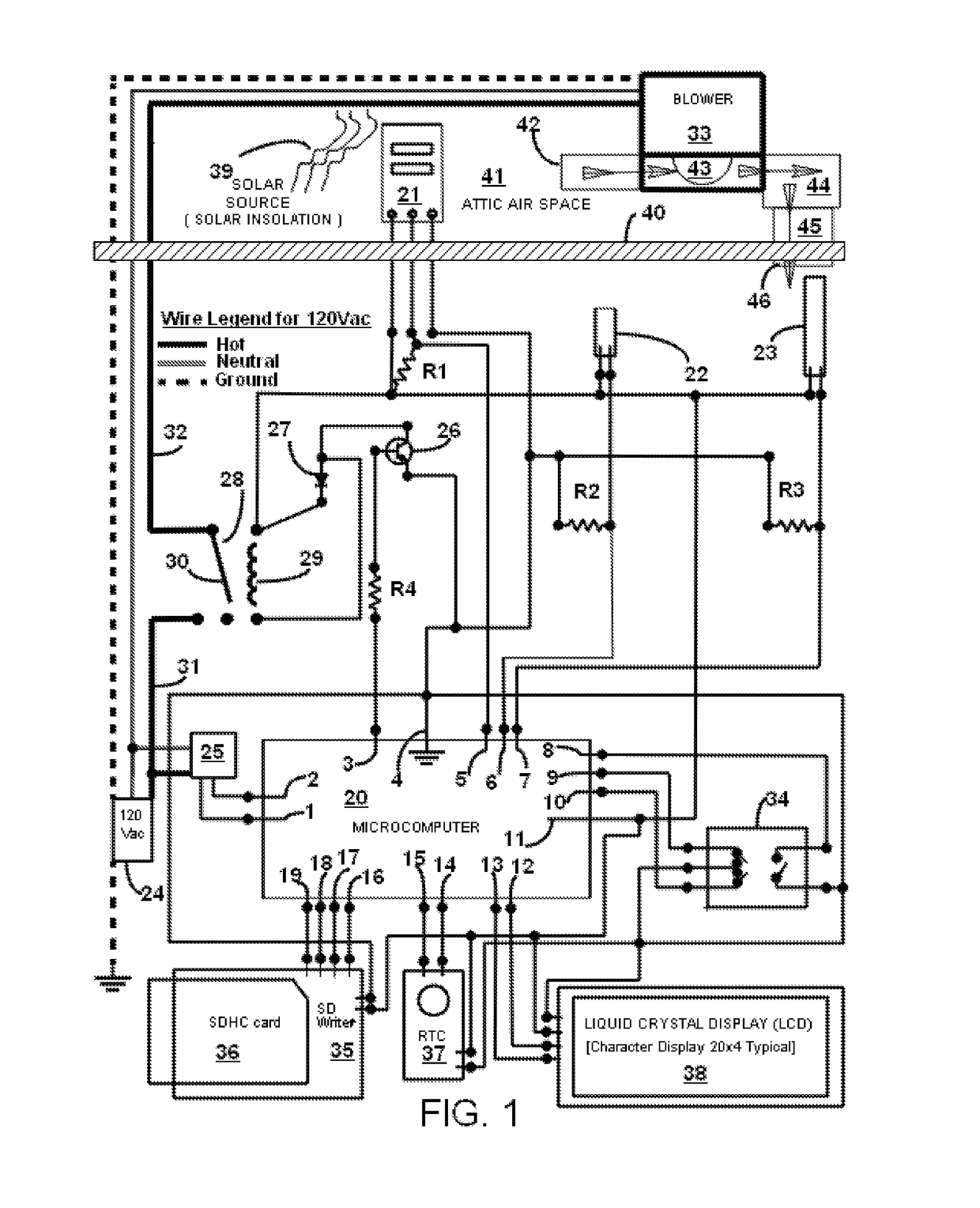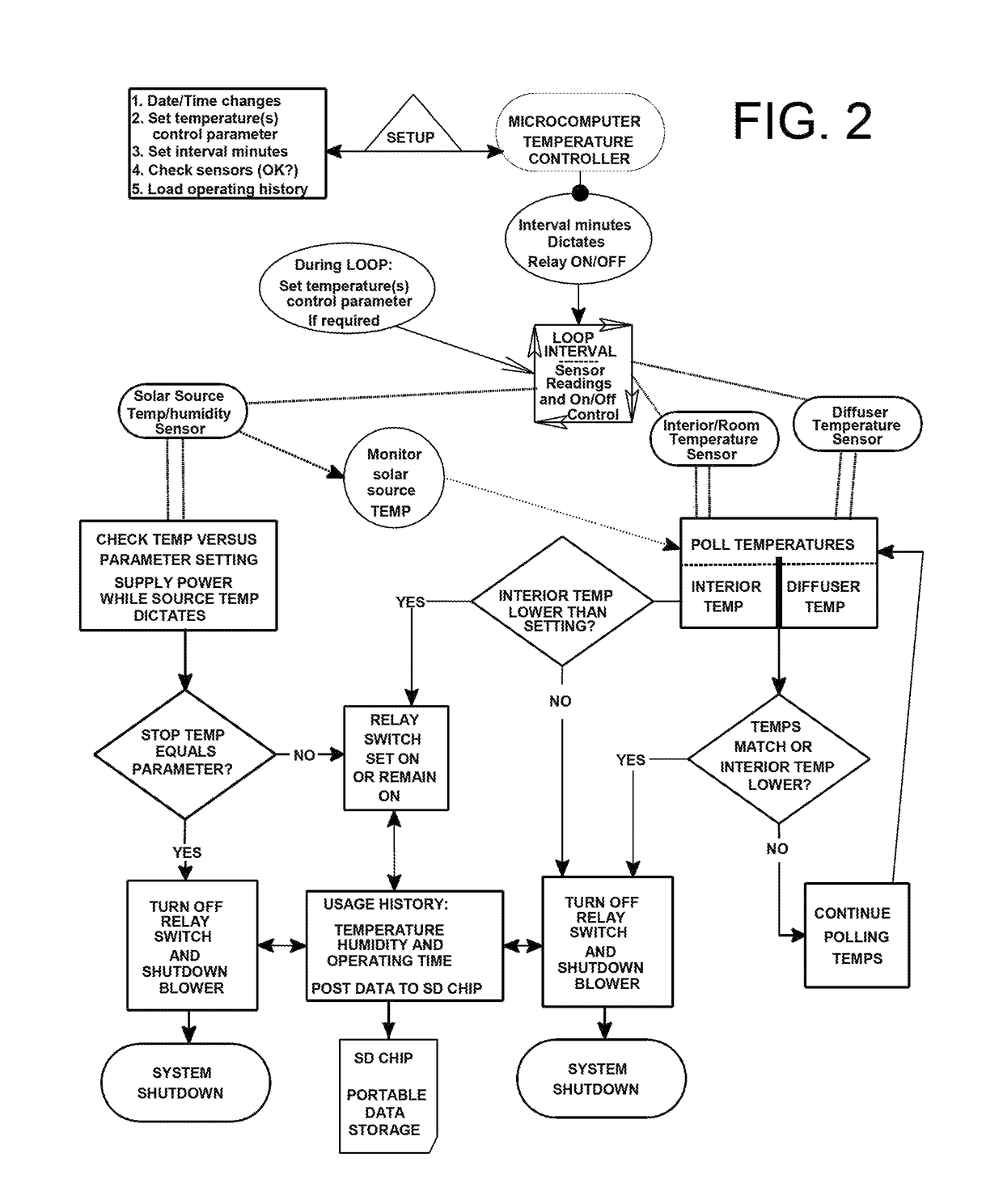Solar energy space heating thermostatic controller
a solar energy and thermostatic controller technology, applied in the field of solar heating systems in buildings, to achieve the effect of reducing the number of thermostats
- Summary
- Abstract
- Description
- Claims
- Application Information
AI Technical Summary
Benefits of technology
Problems solved by technology
Method used
Image
Examples
Embodiment Construction
[0067]In the following, the present invention reference numerals are applicable to FIG. 1, listed parts of the apparatus.
Microcomputer and Peripheral Devices on FIG. 1
[0068]20 microcomputer, operating at +5 volt direct current (ATMel 2560 Processor as example)[0069]24 120 Vac main power supply to a 9 volt DC adapter powering the microcomputer[0070]25 120 Vac to 9 volt direct current adapter for powering the microcomputer[0071]33 HVAC blower (air mover)[0072]34 rotary encoder (data input device), with pushbutton integrated into a rotary dial / knob to produce continuous movement clockwise or counter clockwise to effect a numeric input. [The computer program menu interprets push button action, and rotary movement of single digit left− or right+ increments for date and time entry and temperature set point entry.][0073]35 SD card writer / recorder (operates on Serial Peripheral Interface [SPI] Protocol)[0074]36 SD card storage media chip—SDHC type (secure digital high capacity)[0075]37 real...
PUM
 Login to View More
Login to View More Abstract
Description
Claims
Application Information
 Login to View More
Login to View More - R&D
- Intellectual Property
- Life Sciences
- Materials
- Tech Scout
- Unparalleled Data Quality
- Higher Quality Content
- 60% Fewer Hallucinations
Browse by: Latest US Patents, China's latest patents, Technical Efficacy Thesaurus, Application Domain, Technology Topic, Popular Technical Reports.
© 2025 PatSnap. All rights reserved.Legal|Privacy policy|Modern Slavery Act Transparency Statement|Sitemap|About US| Contact US: help@patsnap.com



